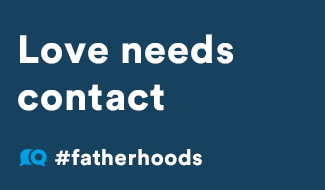When families split up, it is often extremely stressful and emotions can run high. When parents are separating and/or divorcing, and cannot agree on arrangements for their children, this adds to the pressure.
There are a number of ways to resolve issues such as where the children will live, and when and how they see their other parent. If parents are able to reach their own agreement, then the courts do not need to intervene. This is known as the ‘no order principle’, contained in the Children Act 1989, which states that where parents are able to reach their own arrangements the court will not become involved.
The courts no longer deal with ‘custody’ or ‘access’, or ‘residence’ or ‘contact’ and instead deal with the child’s arrangements. This change in terminology was brought in in 2014.
Parents can reach their own agreements direct with one another, or by using a family mediator. CAFCASS (“Children and Family Court Advisory and Support Service”) have produced lots of helpful guides, including a Parenting Plan to assist with this.
A family mediator would meet with both parents, preferably in the same room (but it can be separate – called ‘shuttle mediation’). The advantages to this way of resolving issues, include an often speedier more targeted or personal approach; the parents are in control of this process, whereas if they are using the court process, the court is in control; it can often be a cheaper process; legally aided mediation is available for those who qualify (provided there is a legal aid provider in the area!). It is also possible to arrange for child inclusive mediation with a qualified mediator, which can be a really good way of exploring the child’s wishes and feelings.
But not everyone is able to reach an agreement, and that it takes both parents to agree. Sometimes only one person is willing to try mediation, and sometimes, neither are, or there may be good reasons why it is simply not safe or appropriate. In those instances, a parent may need to make an application for a Child Arrangements Order (“CAO”) to the court.
The courts no longer deal with ‘custody’ or ‘access’, or ‘residence’ or ‘contact’ and instead deal with the child’s arrangements. This change in terminology was brought in in 2014. If the court is considering an application, it will usually be about where the child is going to live, or when they will spend time with the other parent, although other issues such as which school they attend, or medical treatment and other specific issues, can also be considered by the court, where appropriate.
The court’s main consideration when deciding such matters, is the child’s welfare. This is set out in Section 1 of the Children Act 1989 which states that “…the child’s welfare shall be the court’s paramount consideration”.
The court is required to go through a ‘welfare checklist’:
- The ascertainable wishes and feelings of the child concerned (considered in the light of his age and understanding)
- His physical, emotional and educational needs
- The likely effect on him of any change in his circumstances
- His age, sex, background and any characteristics of his which the court considers relevant
- Any harm which he has suffered or is at risk of suffering
- How capable each of his parents, and any other person in relation to whom the court considers the question to be relevant, is of meeting his needs
- The range of powers available to the court under this Act in the proceedings in questionnaire
This all looks straightforward, but how does the court ascertain all of this?
A short safeguarding report or letter will be filed with the court and served on the parents before the first hearing from CAFCASS, confirming whether there are any safeguarding concerns from the police or social services perspectives.
Where there are safeguarding issues raised, the court can order a report from CAFCASS, to look into these aspects. This report is often referred to as a ‘section 7 report’. In families where there has been social services involvement, the court will generally ask the social worker who has been dealing with the family to prepare the section 7 report, instead of CAFCASS.
The CAFCASS officer, or social worker, will speak to each parent, and will usually speak to the child, usually in their offices, or sometimes at school, or occasionally at home. Once they have done so, they will prepare their report, file it with the court, and also serve it with each parent and/or their solicitors, if they have them.
The court will generally have timetabled a short DRA Hearing (Dispute Resolution Appointment) shortly after the report is due, to consider whether the parents can reach agreement or not. If they cannot, then the court will generally order a contested hearing to be listed for maybe a day or so, depending on how great the issues are, and potentially how many witnesses may need to give evidence. In most cases, the witnesses the court will want to hear from, will be limited to each parent and the CAFCASS officer or social worker, but occasionally other witnesses, including a new partner or family member, may be allowed as well. During these final hearings, the court will hear the evidence and then hear ‘submissions’ from the parents or their lawyers, and then the Judge or Magistrates, will make a decision.
Posted on July 15, 2018














